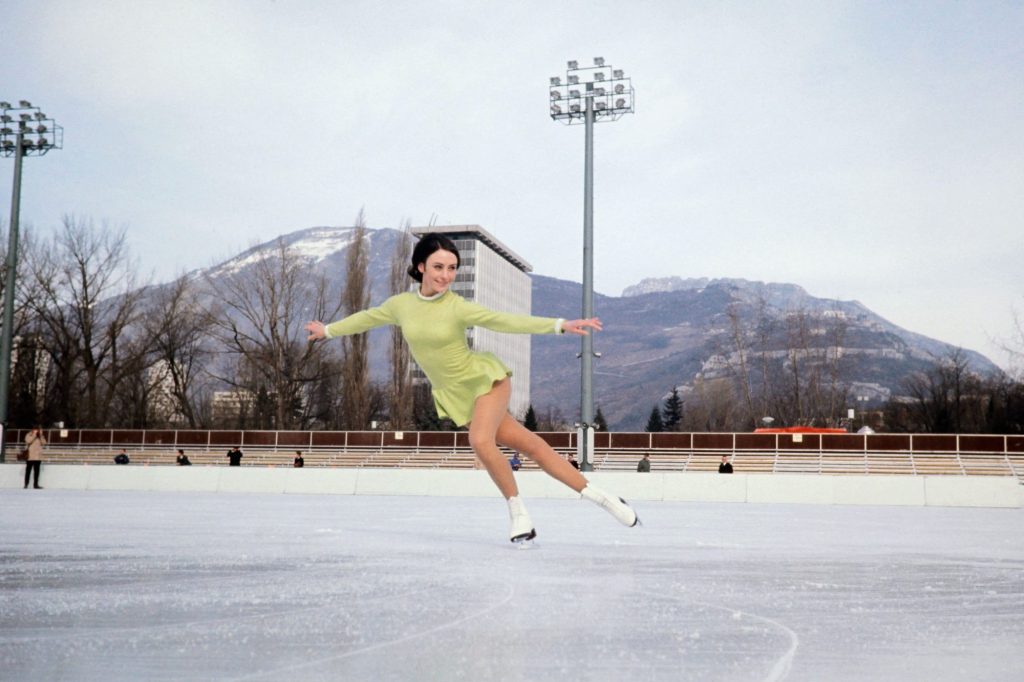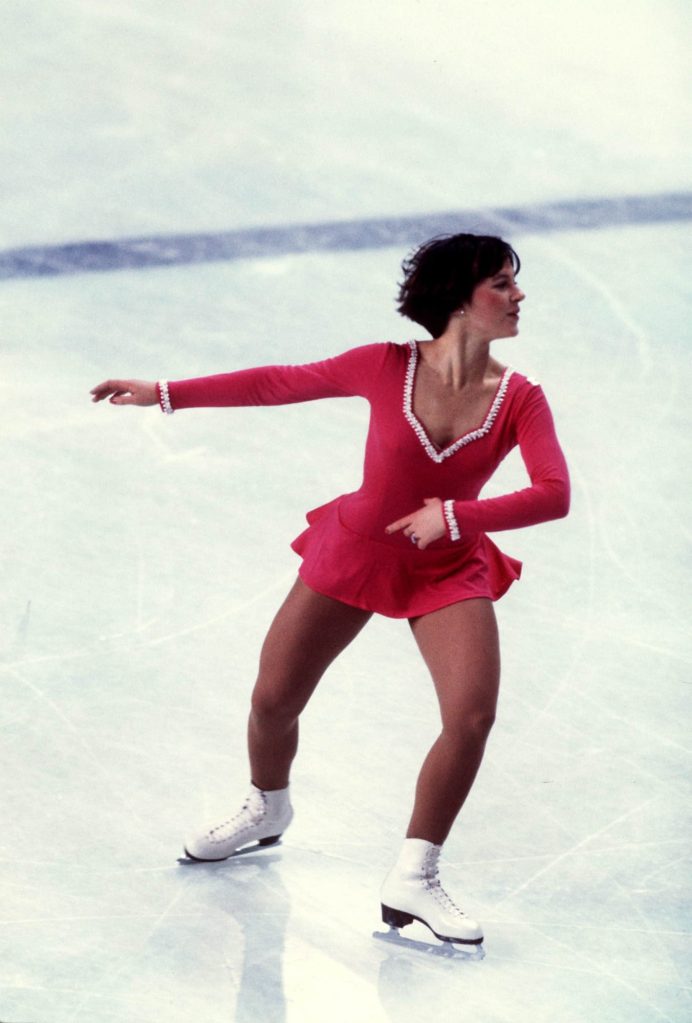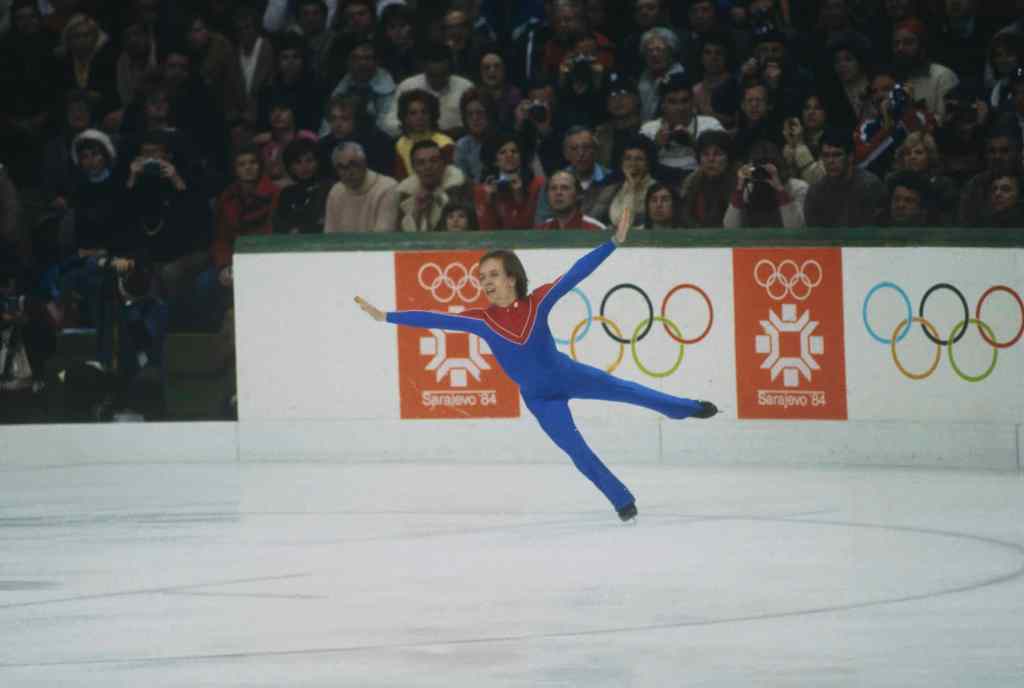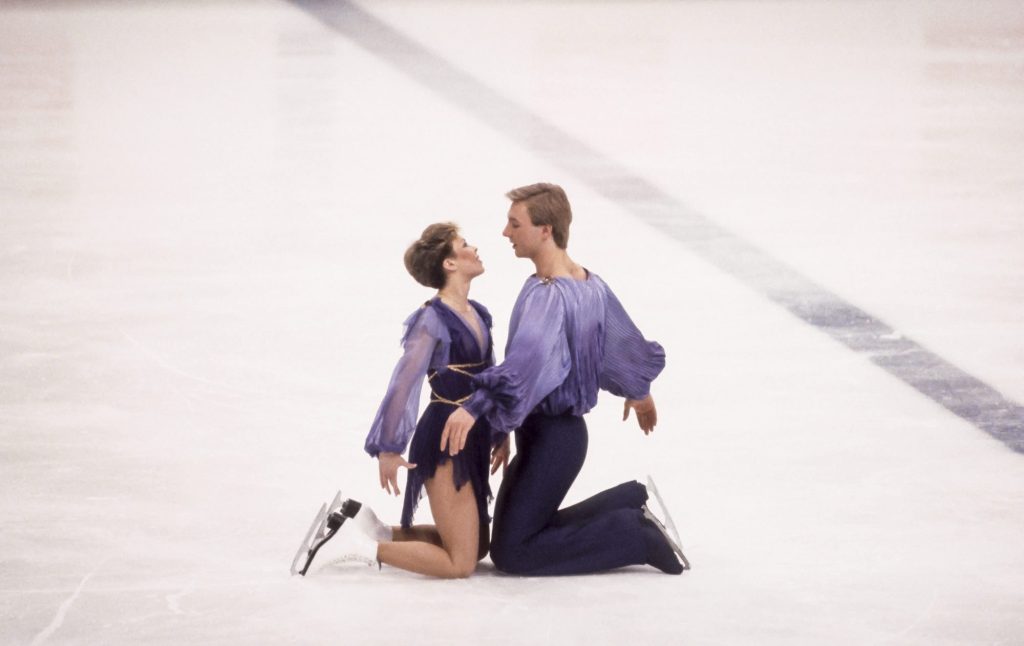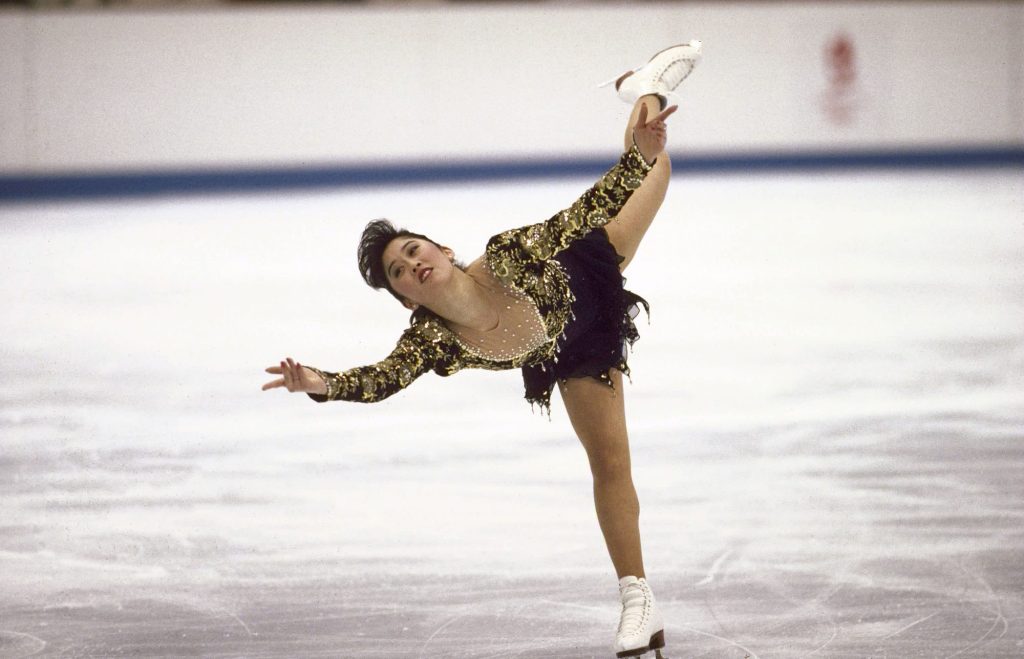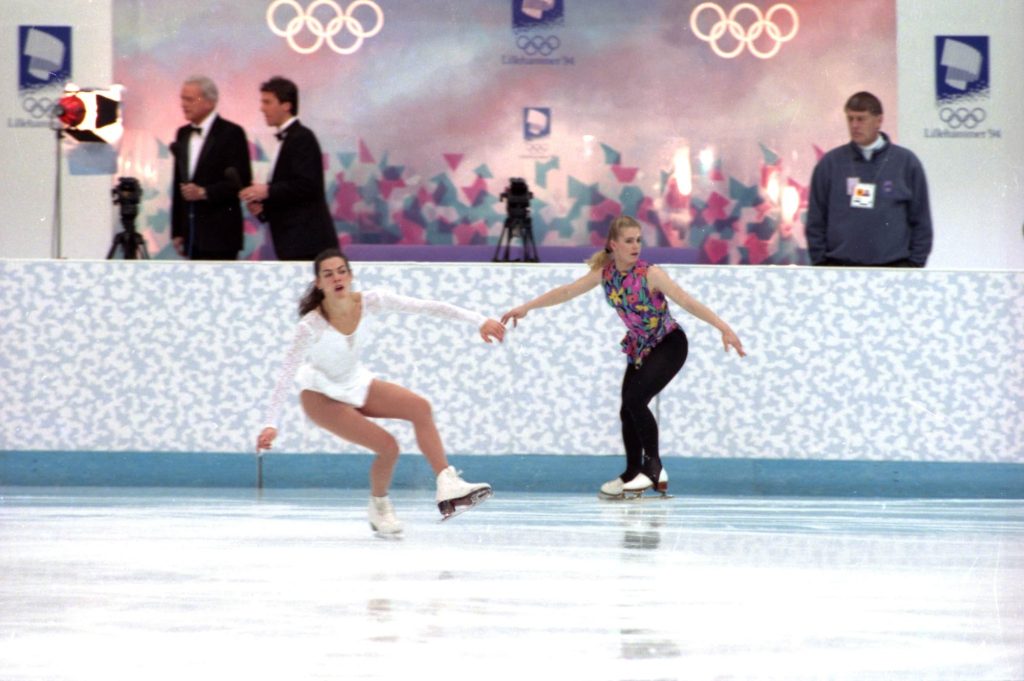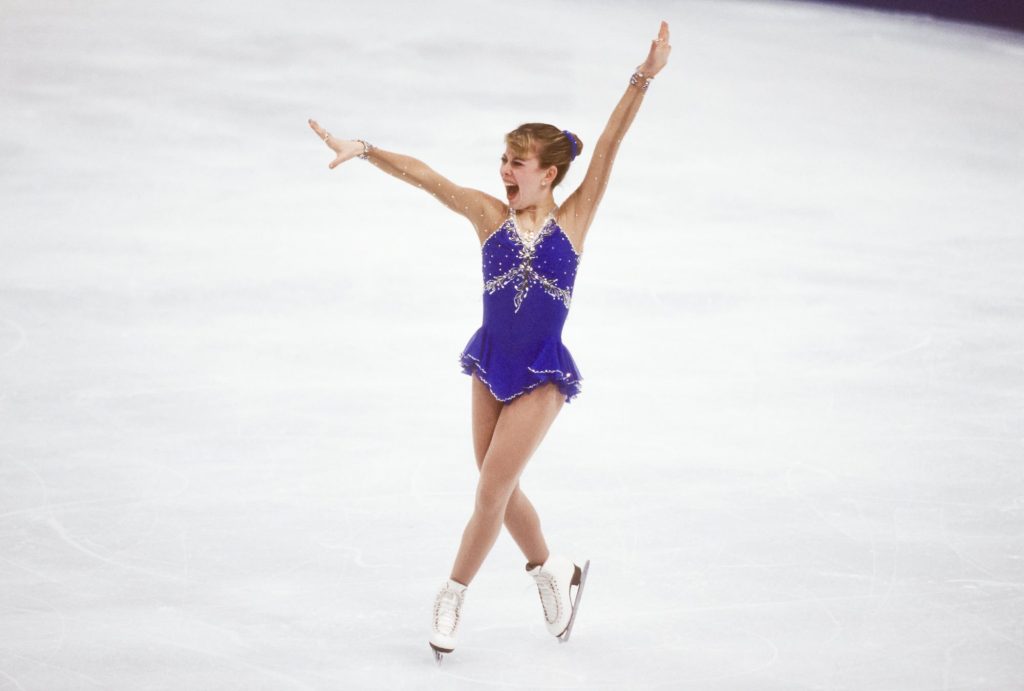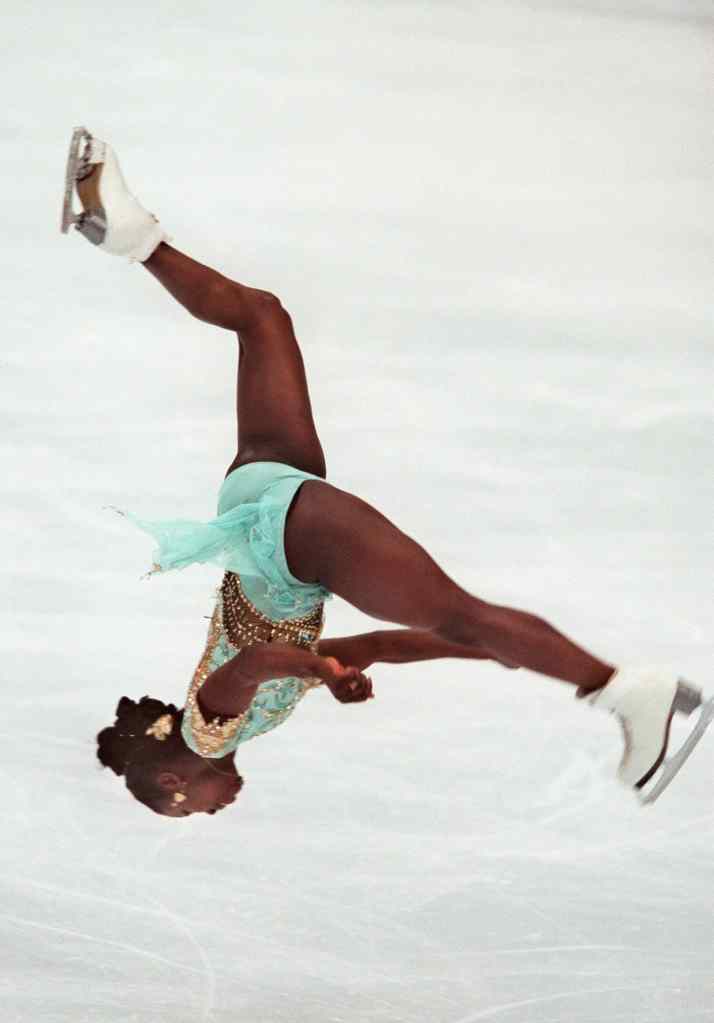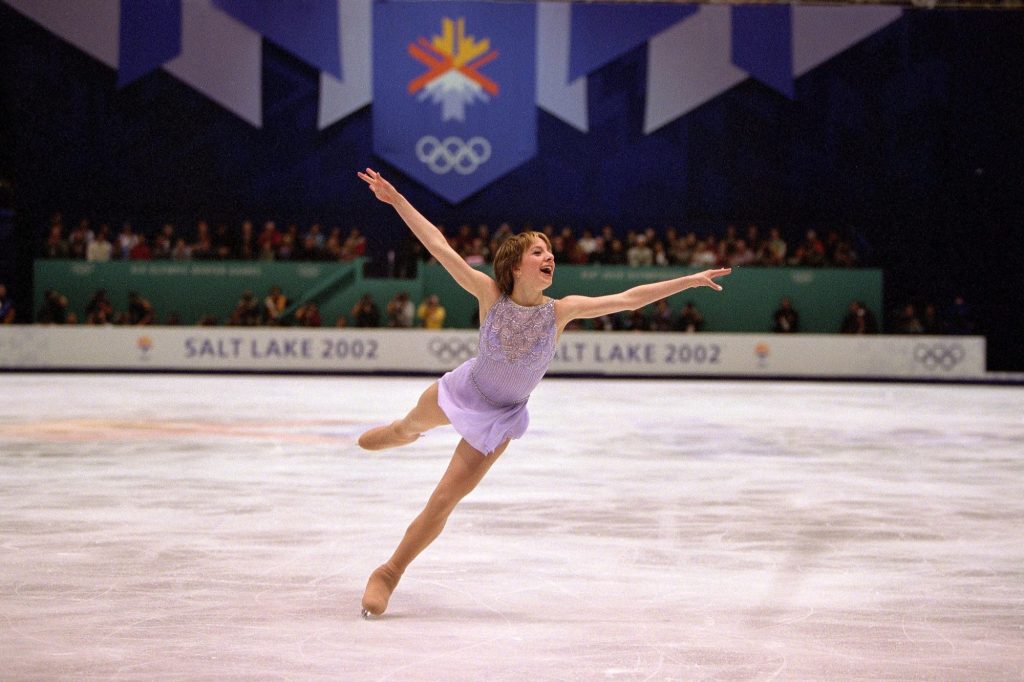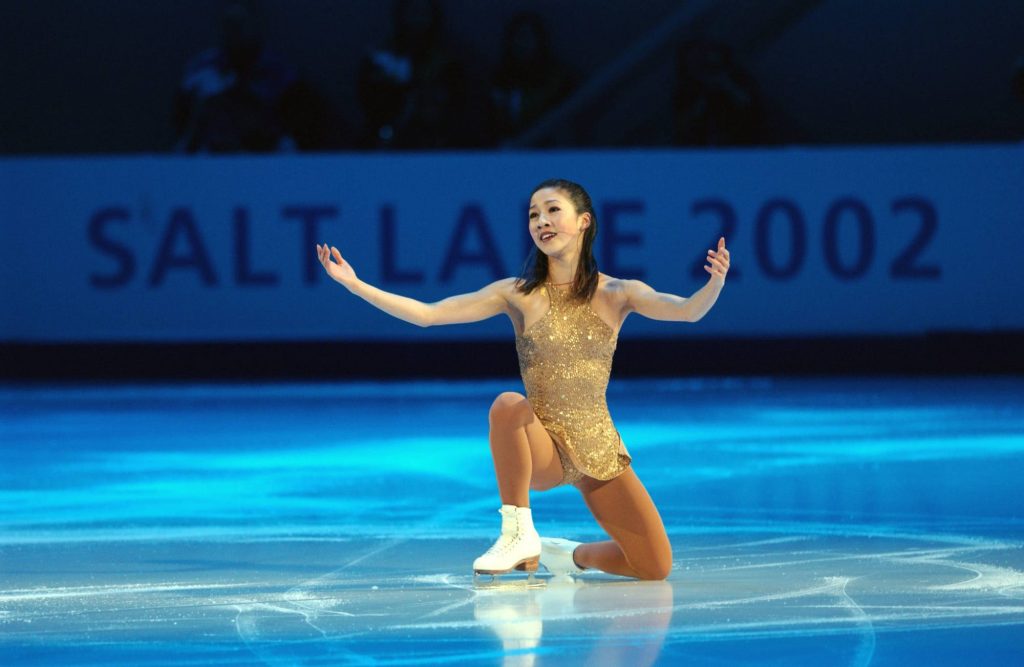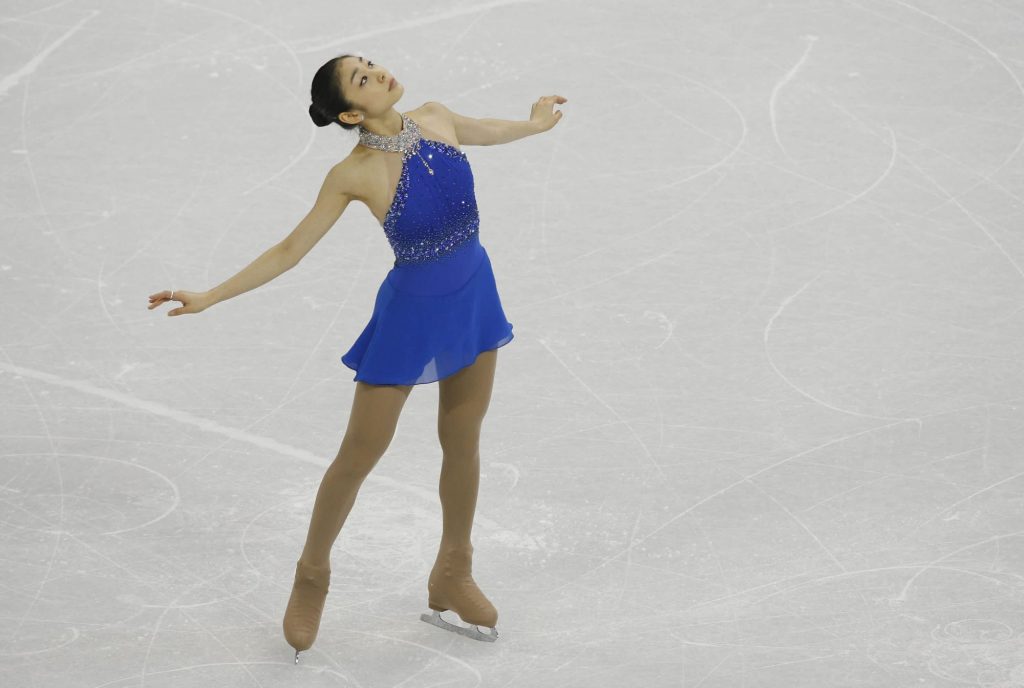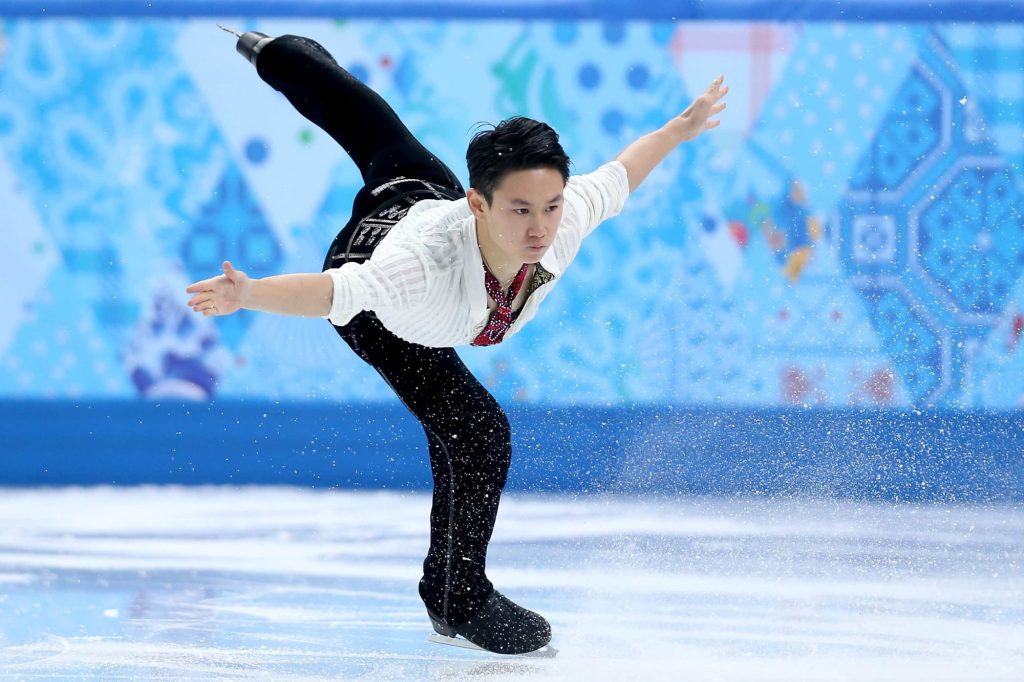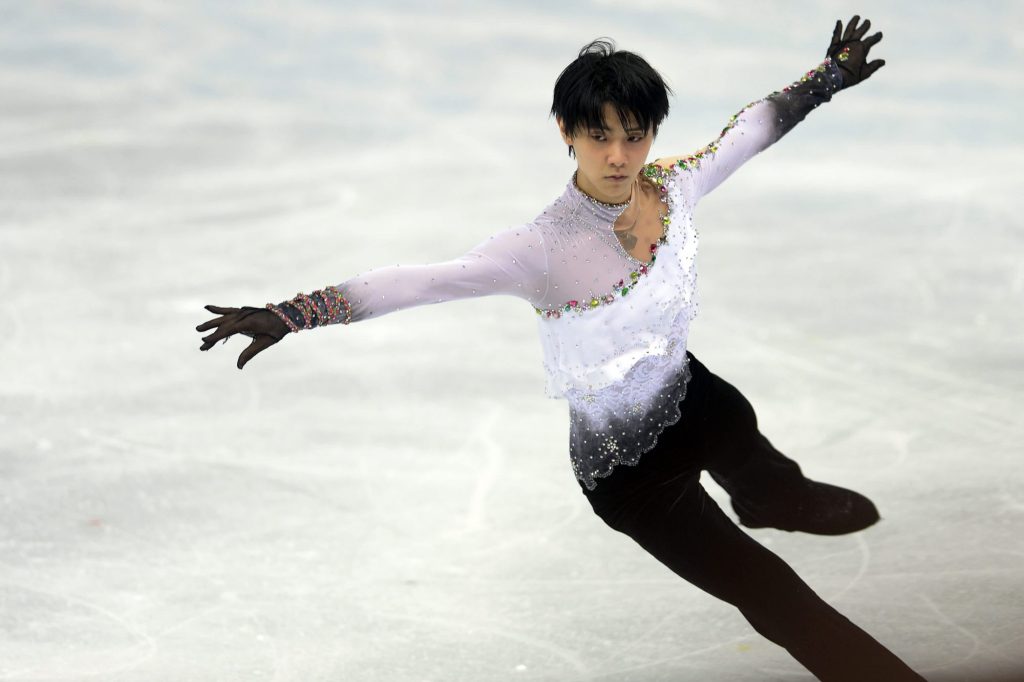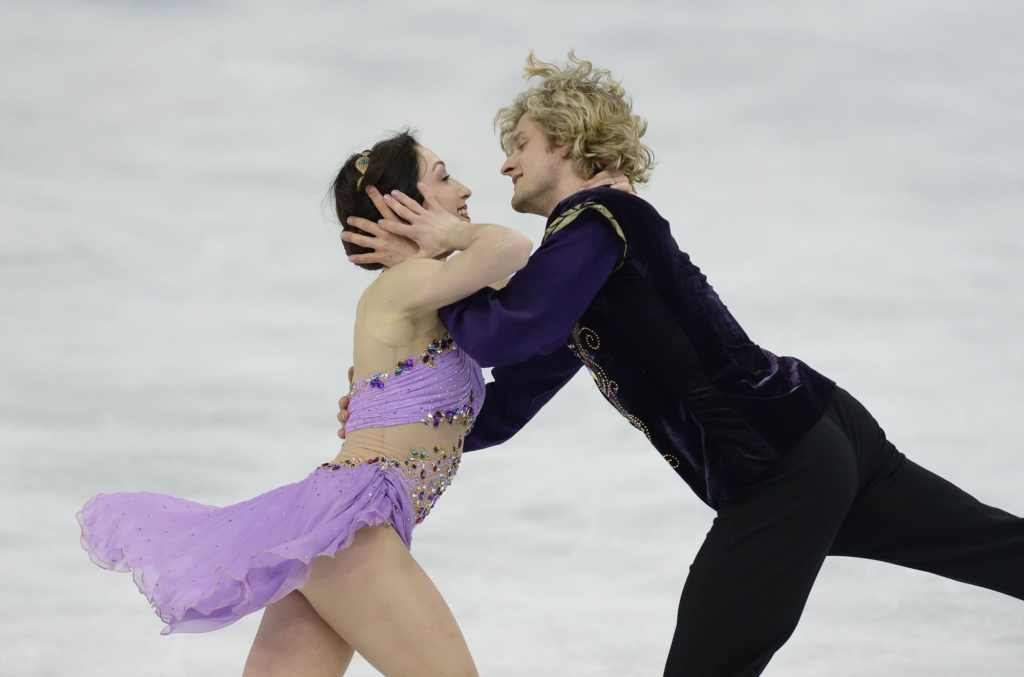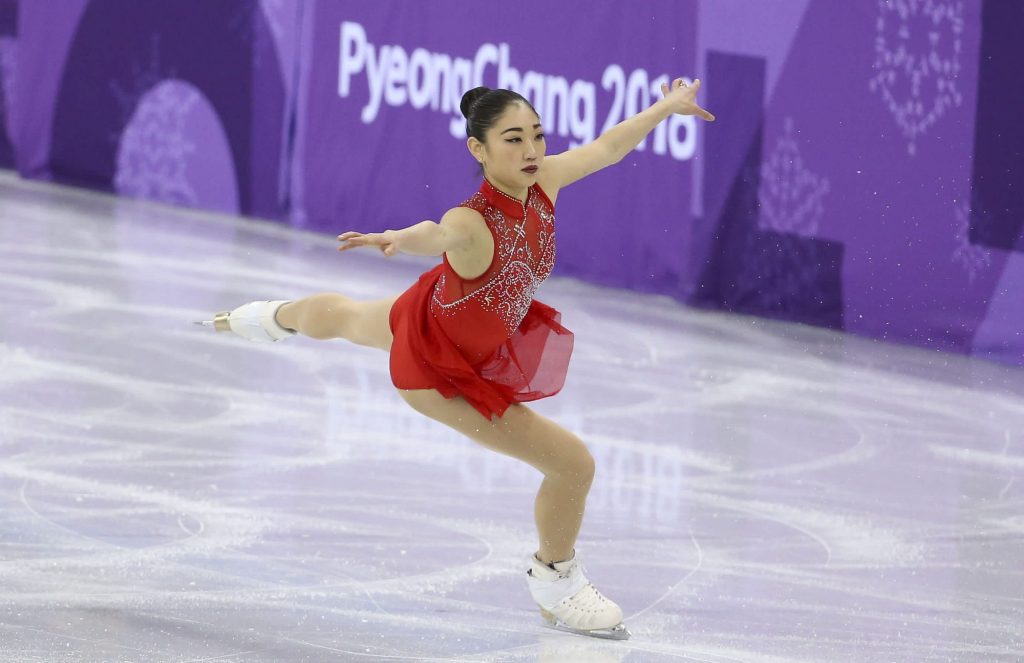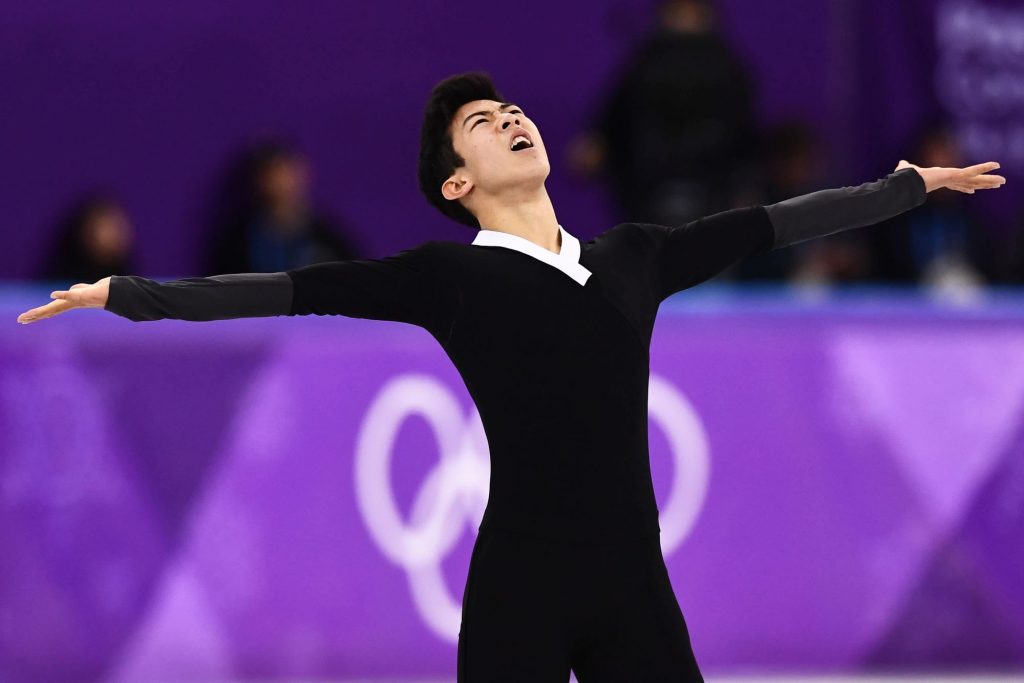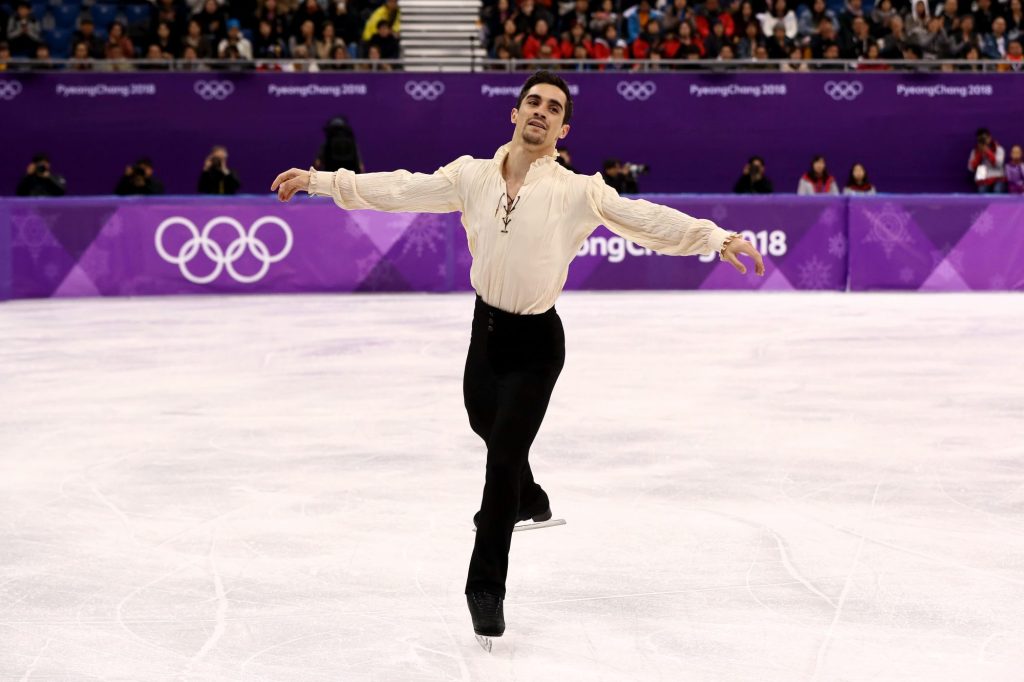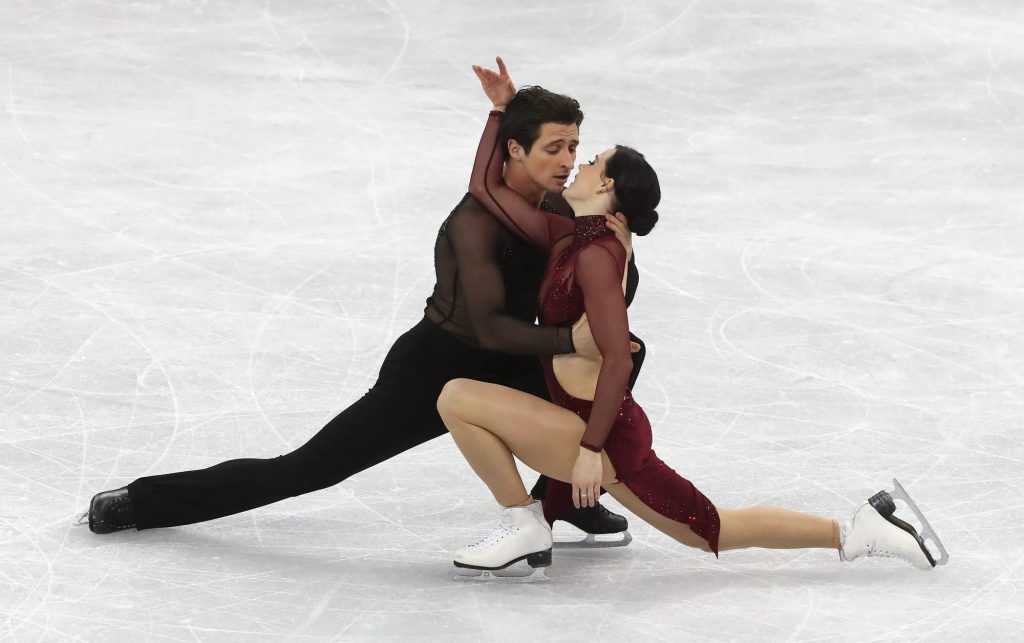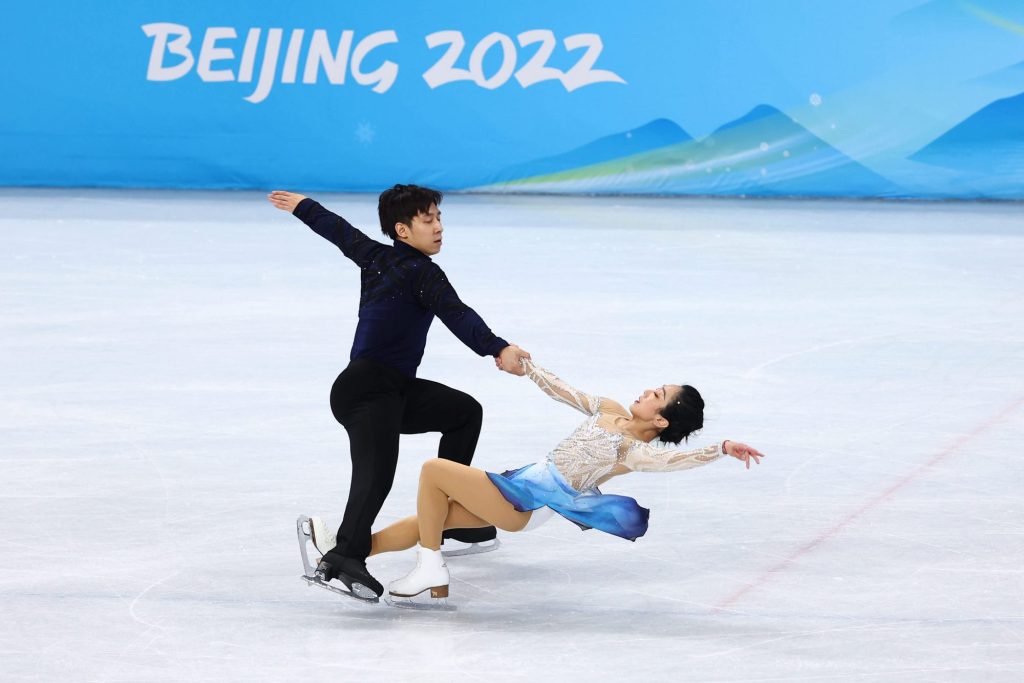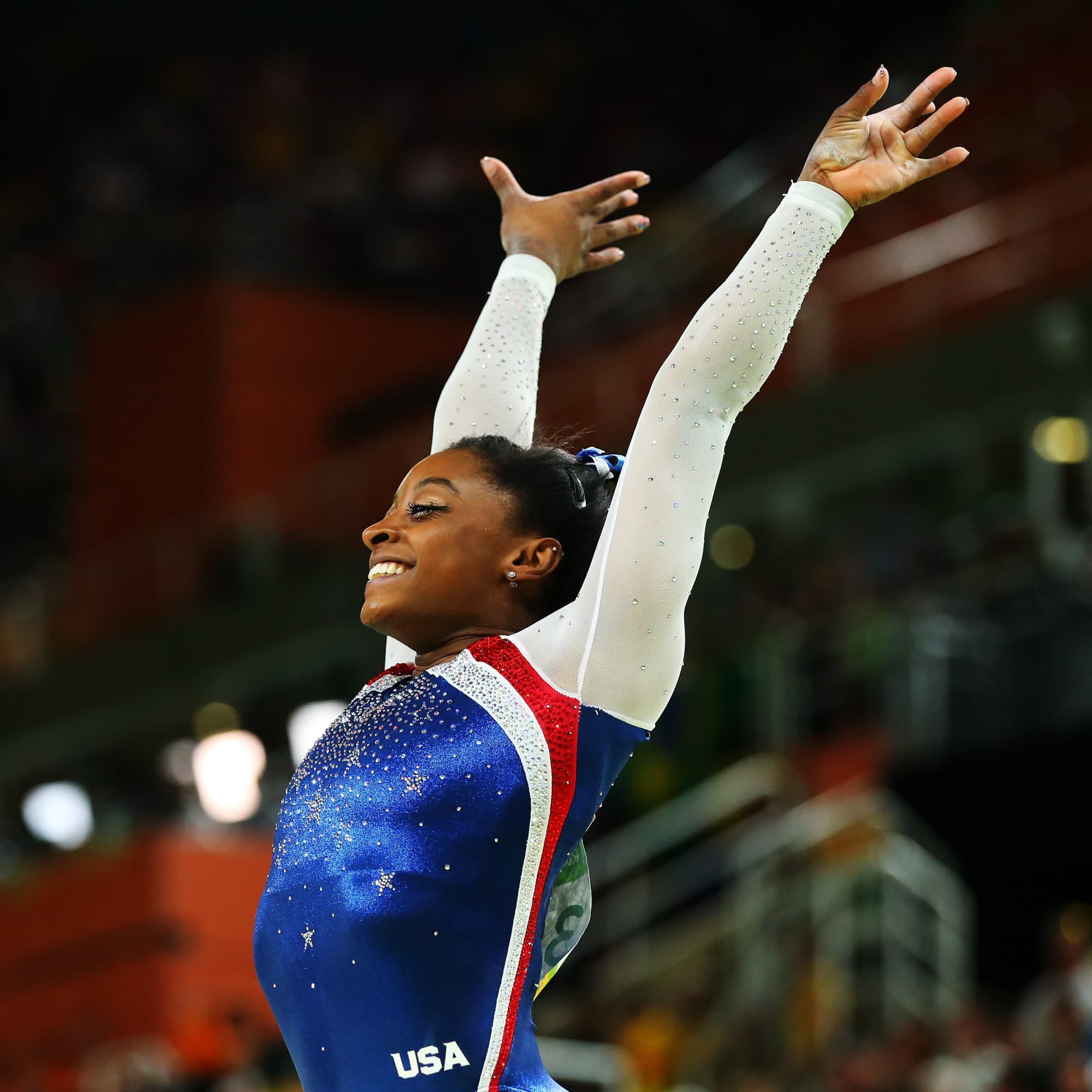
- POPSUGAR Australia
- Fitness
- 24 Olympic Moments That Defined the Sport of Figure Skating
24 Olympic Moments That Defined the Sport of Figure Skating

Competing at the Olympics is the pinnacle of any athlete’s career. For figure skaters, the Winter Games mark the culmination of years of intense dedication and training, and there’s nothing quite like seeing an athlete capture their “Olympic moment,” when everything comes together at exactly the right time. With that level of pressure, though, there’s also a good deal of heartbreak, and at times, even moments that are so difficult to watch, they stay with us for years.
Since making its Olympic debut, figure skating has seen a number of particularly memorable moments, from unforgettable victories to redemption arcs to scandals that forever changed the sport. The 2022 Winter Olympics in Beijing will undoubtedly go down in history not only for its breathtaking performances, but also for the unusual events that cast a pall over the competition. As these Games come to a close, let’s look back at some of the most significant moments in Olympic figure skating history – for better and for worse.
Peggy Fleming Stands Alone at the 1968 Olympics
Today, American figure skaters are highly competitive on the world stage, but that wasn’t always the case. At the 1968 Olympics, Peggy Fleming was the only American athlete to win a gold medal. Her victory was particularly powerful coming several years after the deadly crash of Sabena Flight 548, which claimed the lives of the entire American figure skating team at the time, as well as many of their coaches, en route to the World Championships. Fleming’s gold medal, seven years after the crash, represented something of a fresh start for the US figure skating program, and the country’s skaters have continued to impress in the decades since.
Dorothy Hamill Becomes a Household Name
Who’s the first real skating “superstar” you can remember off the top of your head? Chances are, Dorothy Hamill’s name almost immediately comes to mind. Hamill’s career reached its peak at the 1976 Olympics, where she snagged the gold medal. Although Hamill’s technical content is low-key by today’s standards (Hamill would be the last singles skater to win Olympic gold without triple jumps), she pushed the boundaries of her sport at the time and even invented her own spin variation. The spin, which is essentially a camel spin that turns into a sit spin, became one of her signature moves, amusingly called the “Hamill camel.”
Scott Hamilton Makes His Mark
American men have a long history of excellence in figure skating, with many of the athletes in recent decades finding inspiration in figure skating legend Scott Hamilton. ’90s kids may remember him as a born showman and the star of countless ice shows and TV broadcasts, always with a comic twist. Before that, though, Hamilton made his mark as a two-time Olympian and a four-time national champion. After winning nationals in 1981, Hamilton never lost a competition again – including at the 1984 Olympics, where he bested Canada’s Brian Orser to win gold (while costumed in one extremely ’80s jumpsuit).
Torvill and Dean Define the Sport of Ice Dance
For a time, ice dance was something of a second-rate Olympic figure skating discipline. Without the spectacular jumps, it simply didn’t garner as much attention as the pairs and singles events. Then along came Great Britain’s Jayne Torvill and Christopher Dean, who arguably defined the modern sport of ice dance with their gold medal performance at the 1984 Olympics. Their now-iconic “Bolero” program became the highest-scoring program of all time under the old 6.0 system, earning 12 perfect 6.0s and six 5.9s, including a perfect artistic impression score from every single judge. Today, almost every ice dance team can look to Torvill and Dean as the trailblazers who put their discipline on the map.
Gordeeva and Grinkov Become Legends of Their Sport
While other disciplines have had GOATs come and go, to this day, if you ask skating fans for the greatest pairs skaters of all time, most will probably still say Ekaterina Gordeeva and Sergei Grinkov. Skating with an unmatched combination of artistry and technical prowess, the Soviet pair won two Olympic gold medals: one during their Olympic debut in 1988 and another in 1994. Throughout their career, they also attempted elements like quad twists that pairs today still rarely perform. Gordeeva and Grinkov’s partnership, both on and off the ice, was tragically cut short in 1995 when Grinkov died suddenly from a heart attack, but they’ll forever be remembered for their contributions to the sport.
Midori Ito Becomes the First Woman to Land a Triple Axel on Olympic Ice
The triple axel is such a challenging jump that few women have ever landed it – and only five have done so at the Olympics. Japan’s Midori Ito was the first. At the 1992 Olympics, Ito attempted a triple axel at the start of her free skate, missed it, then tried again near the end and landed it – a performance that helped earn her the silver medal. Ito was also a pioneer of the triple-triple jump combination, putting her technical content on par with many of the world’s top men at the time. Even without Olympic gold to her name, Ito remains one of the most consequential athletes in figure skating history.
Kristi Yamaguchi Blazes a Trail to Olympic Gold
American women were on top of the figure skating world in the late 1980s and early 1990s. At the 1992 Olympics, all three American women placed within the top four. Leading the way was Kristi Yamaguchi, who had only switched to singles’ skating a few years earlier. As recently as 1988, Yamaguchi was a pairs skater, partnered with fellow future skating legend Rudy Galindo. By 1992, however, she’d made a name for herself in the singles discipline and went into the Olympics as the defending US national champion and world champion. Yamaguchi’s first-place finish marked the first time an Asian American woman won gold at the Winter Olympics.
Nancy Kerrigan and Tonya Harding's Rivalry Boils Over
Is there any figure skating rivalry more infamous than the one between Nancy Kerrigan and Tonya Harding? At the height of their careers, Kerrigan and Harding represented two very different styles of figure skating: Kerrigan, the elegant “ice princess,” and Harding, the rough-around-the-edges technical maven. Things went from scandalous to violent in early 1994, when, just a month before the Olympics, an assailant hired by Harding’s ex-husband assaulted Kerrigan, clubbing her in the knee with a police baton. Harding denied knowledge of the plot but did eventually admit to being part of the cover-up.
Both women did make the Olympic team, although Kerrigan did not compete at nationals due to her injury (Harding won the national championship). At the Olympics, Kerrigan won silver while Harding placed eighth after several problems. Kerrigan went pro after the Games, and Harding was banned from competitive skating.
Tara Lipinski Becomes the Sport's Youngest Olympic Gold Medalist
Olympic records are made to be broken, but this one still stands, nearly 25 years later. At the 1998 Olympics, 15-year-old Tara Lipinski became the youngest figure skater ever to finish atop the Olympic podium, besting fellow American skater Michelle Kwan and China’s Lu Chen to take home the gold. So far, no woman has beaten her record, although the 2018 women’s champion, Alina Zagitova, came close; Zagitova was less than a month older than Lipinski was when she won gold. Lipinski left competitive figure skating after the Olympics, but today, she’s a commentator for NBC.
Surya Bonaly Backflips Into History
While many of the most memorable Olympic moments involve skaters winning medals, this one came from an athlete who knew she was out of medal contention. Surya Bonaly, a French skater and three-time World silver medalist, had a reputation for attempting (and often landing) incredibly difficult jumps, especially in combination. And the quadruple jumps that are still so rare in women’s figure skating? Bonaly became the first woman to attempt one in competition in 1992.
Nevertheless, Bonaly was in sixth place heading into the free skate at the 1998 Olympics, her third and final Winter Games. Still battling back from an Achilles injury that had hampered her jumps, the former gymnast decided to play to the crowd with a backflip – a move that had been banned from figure skating since 1976. She landed it on one foot to the delight of the audience. While the element was penalised by the judges, it cemented Bonaly’s place in Olympic history – and continued to thrill spectators at ice shows once she turned pro.
Sarah Hughes Surprises the World
Heading into the 2002 Olympics in Salt Lake City, Sarah Hughes wasn’t widely predicted to make the podium. Hughes was the third-place qualifier just among the American women, and after the short program at the Olympics, she was in fourth place. Then came the free skate, in which Hughes landed seven triple jumps, including two triple-triple combinations.
According to the scoring rules at the time, Hughes wasn’t guaranteed gold, despite scoring the highest in the free skate. Her fourth-place finish in the short program meant that teammate Michelle Kwan, who led after the short, would have to land in third place or lower in the free in order for Hughes to stand atop the podium. That’s exactly what happened, leading to a memorable moment for Hughes, who became the only American to win Olympic gold without ever winning a national or world championship.
Michelle Kwan Skates One Last Time on Olympic Ice
After finishing in third behind fellow American Sarah Hughes and Russia’s Irina Slutskaya, five-time world champion Michelle Kwan took to the ice one last time in Salt Lake City, in what would be the final performance of her Olympic career. For the exhibition gala, Kwan skated a gorgeous program to “Fields of Gold.” The performance, which had both the audience and Kwan in tears by the end, became one of her most famous skates, and it served as a fitting Olympic finale for an athlete who contributed so much to the sport of figure skating over her career.
The 2002 Judging Scandal Changes Figure Skating Forever
Figure skating, like any sport, has had its fair share of issues, but this one quite literally changed the trajectory of the sport. At the 2002 Olympics, a scandal erupted following the pairs competition. Elena Berezhnaya and Anton Sikharulidze of Russia placed in first in the short program over Jamie Salé and David Pelletier of Canada; in the free skate, the Canadians skated better, but were just one judge’s mark shy of overtaking the Russians for gold.
A controversy quickly swelled around the French judge, and it was alleged that she, at the request of the head of the French skating federation, had agreed to rank the Russians first no matter what in exchange for favorable results for a French ice dance team. As a result of the uproar, the decision was made to award joint gold medals to both teams. In subsequent years, figure skating underwent a massive overhaul from the old 6.0 system to a highly technical one.
Yuna Kim Takes Home the Gold For Korea
For many years, figure skating was largely dominated by North American and European athletes, but by the early 2000s, things had begun to shift, with countries like Japan and China becoming highly competitive on the world stage. Then, at the 2010 Olympics, Yuna Kim of South Korea made history as the first Korean skater to win an Olympic medal, earning her first-place finish with a world record 150.06 points. Still considered one of the all-time greats, Kim inspired an entire generation of Korean skaters, who consistently contend for medals in international competition.
Joannie Rochette Skates an Emotional Tribute to Her Mom
The 2010 Olympics in Vancouver were supposed to be a career highlight for Canadian athletes, but for Joannie Rochette, what should have been a triumph was tinged with tragedy. While practicing two days before the short program, Rochette received the news that her mother had died suddenly. She chose to remain in the competition and skate in her mother’s honor, securing the bronze medal in front of her home crowd. At the gala performance at the end of the competition, Rochette skated a new program to Celine Dion, her mother’s favorite singer. There wasn’t a dry eye in the house.
Denis Ten Makes History For Kazakhstan
The nation of Kazakhstan has not historically been a skating powerhouse, which made the career of Denis Ten all the more remarkable. Ten broke new ground for his country’s figure skating program, becoming the first athlete from Kazakhstan to win internationally and to stand on major podiums including the World Championships. At the 2014 Olympics, he added another first to his historic career, earning a bronze medal and becoming Kazakhstan’s first Olympic medalist in figure skating.
Tragically, Ten’s career came to a devastating end only four years later, when he was killed by two carjackers attempting to steal his car’s mirrors. Today, the Denis Ten Memorial Challenge, a “Challenger Series” international competition, is held annually in Kazakhstan.
Yuzuru Hanyu Launches a Legendary Streak
Medalists come and go, but Japanese skater Yuzuru Hanyu is easily one of the all-time greats in the sport of figure skating. Hanyu came into the 2014 Olympics as one of the favorites, and he more than delivered, winning his first Olympic gold medal in record fashion and becoming the youngest men’s champion in 66 years. Since then, Hanyu has broken record after record, even becoming the first man since Dick Button to win back-to-back Olympic titles. Along the way, he’s relentlessly pushed the technical boundaries of the sport. His next goal? Mastering the quad axel, a jump so difficult no one has ever landed it cleanly.
Davis and White Take American Ice Dance to New Heights
By the 2014 Olympics, American figure skaters had won plenty of gold medals in the singles’ disciplines, but despite making strides in ice dance, the gold medal still eluded them. Silver medalists Meryl Davis and Charlie White had spent the four years since the 2010 Olympics in a sport-defining rivalry with training mates Tessa Virtue and Scott Moir (the 2010 gold medalists). Finally, in Sochi, it was the Americans’ time to shine. Davis and White put down two spectacular programs, breaking a world record and winning the country’s first Olympic title in ice dance. Davis and White’s gold medal marked a new era for the American ice dance “dynasty,” which has seen an American team on every Olympic podium since 2006.
Mirai Nagasu Lands a Historic Triple Axel in the Team Event
Twenty-six years after Midori Ito’s Olympic first, the triple axel remained a jump that very few women could land. Coming into the 2018 Olympics, all eyes were on Mirai Nagasu, who had hopes of becoming the first American woman to land the triple axel at the Olympics. Assigned to the free skate portion of the team event, Nagasu went for the triple axel as the first jump of her program and absolutely nailed it. The feat made her only the third woman in history to land a triple axel at the Olympics. Nagasu went on to land eight triple jumps during the routine (the maximum allowed under current rules), paving the way for a team bronze.
Nathan Chen's Comeback Stuns the World
Heading into the 2018 Olympics, skating pundits predicted that Nathan Chen, the fast-rising star of American figure skating, would likely land on the podium at his very first Olympics. It was a massive shock, then, when Chen’s short program went wrong in nearly every way, putting him in 17th place and almost 30 points behind the leader.
That failed short program set the stage for one of the biggest comebacks in Olympic history. Out for redemption, Chen put down the best free skate of the night, becoming the first skater to ever land six quads (five cleanly). Although he didn’t land on the podium, he skyrocketed from 17th to fifth place overall, and it was the last time he would lose a competition for several years. Exactly four years later, in Beijing, Chen completed his journey to Olympic gold.
Javier Fernández Finally Nabs an Olympic Medal
Olympic storylines tend to center on young up-and-comers, but the longtime skaters capping their careers often deliver the most emotional moments of the Games. After barely missing the podium at the 2014 Olympics, Javier Fernández upped his game over the next four years, even beating training mate Yuzuru Hanyu at the World Championships twice. In 2018, what was sure to be his last Olympics, Fernández earned bronze, becoming the first Spanish skater to win an Olympic medal. In retirement, Fernández has continued to break new ground for figure skating in Spain, launching an academy in Madrid in 2020.
Virtue and Moir Go Out on a High Note
At the end of a long and lustrous career, Canadian ice dancers Tessa Virtue and Scott Moir made a comeback for one last Olympic cycle. For their final competitive appearance, they skated a free dance to a “Moulin Rouge” medley, breaking world records and earning their second individual gold medal (their first came in 2010, followed by a silver in 2014). With that first-place finish, Virtue and Moir became the most decorated figure skaters in Olympic history and the only ice dancers ever to achieve a “Super Slam” by winning every major competition at both the senior and junior levels.
A Russian Doping Scandal Casts a Shadow
Figure skating at the 2022 Olympics will always be remembered for the doping scandal overshadowing both the women’s individual and team events. A day after 15-year-old Kamila Valieva, representing the Russian Olympic Committee, made history as the first woman to land a quad at the Olympics, news broke that she had tested positive for a banned substance. Following a ruling that allowed Valieva to remain in the competition, she shockingly stumbled to a fourth-place finish in the women’s final. The meltdown that followed, both from Valieva and her medalist teammates, shocked the world and raised serious questions about the training methods and toxic culture that have shaped the sport.
Sui and Han Claim Gold For the Host Nation
Getting to compete at the Olympics is one thing, but getting to shine on home ice is something most athletes can only dream of. Four years after earning an Olympic silver medal by the narrowest of margins, Chinese pairs team Sui Wenjing and Han Cong got another chance to stand atop the podium at the 2022 Olympics in Beijing. They did, in fact, finish first this time, breaking world records with both their short program and overall scores. It was China’s ninth gold medal of these Winter Games – the most in the country’s history – and a stunning way to end a tumultuous two weeks of Olympic competition.


